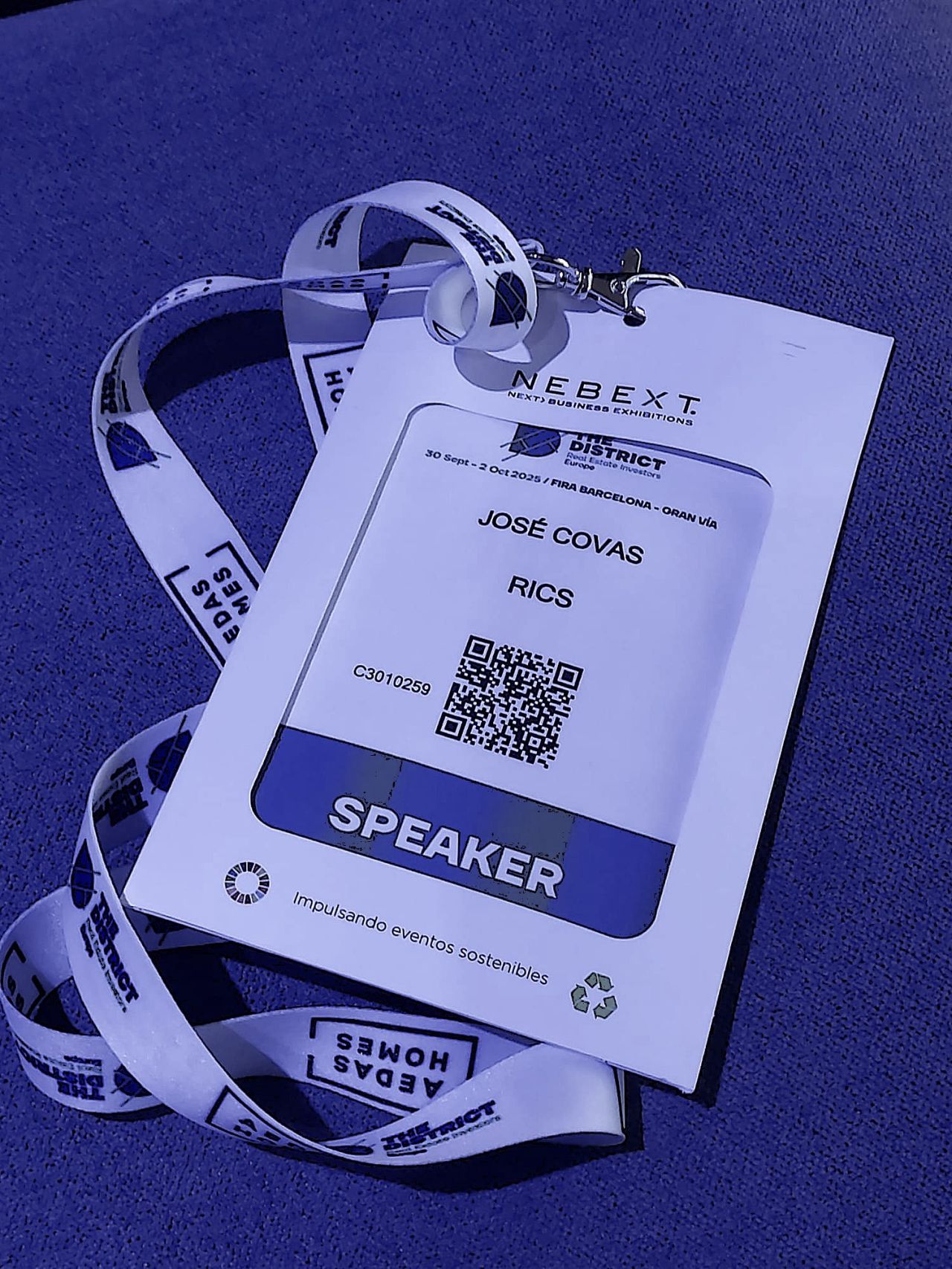Barcelona hosted, between September 30 and October 2, another edition of The District, the largest European meeting dedicated to investment and innovation in the real estate sector. It was three intense days, with hundreds of international speakers, dozens of parallel panels, and thousands of participants from all continents. A true global epicenter, where the trends that are transforming the market were discussed, from institutional capital to technology, including sustainability and social impact.
The diversity of the agenda reflects the growing complexity of the sector: financing, ESG, affordable housing, data centers, logistics, hospitality, proptech, smart cities, valuation and much more. The District is not just a stage for presentations, but a space for the confrontation of ideas, the sharing of best practices and the building of value networks.
Day 1 — Macro trends, capital and asset classes
The first day opened with a focus on the macroeconomic and financial trends that are shaping the sector. Amid the global slowdown, market volatility and growing regulation, the role of institutional capital and new investment geographies stood out. Strong debates addressed affordable housing, alternative funds, secondary markets and how the energy transition will impact asset valuation.
The sessions dedicated to specific classes – residential, logistics, retail, hospitality, data centers – showed that each segment faces its own pressures, but all converge on the same demand: to align financial return with sustainability and social relevance.
Day 2 — Capital, social impact and valuation
The second day was marked by three direct participations of José Covas, representing RICS and as leader of José Covas Real Estate.
In the panel “Alternative Capital: Funds, Platforms, and Co-Investment Strategies”, the debate focused on new ways of financing real estate projects. The key message was clear: more than the cost of capital, what is often decisive is the time of access. The difference between a viable and an unviable project is ultimately measured in the internal rate of return (IRR) – and agility in structuring is the critical factor.
This was followed by the panel “Unlocking Value through Social Impact: Metrics and Strategies in Residential Real Estate”, which went beyond the simple measurement of ESG indicators. The reflection focused on what must be present in every project for it to be truly sustainable for society. Health, work, education and community were highlighted as structural pillars. The message was unequivocal: it is not enough to erect buildings; it is necessary to create living ecosystems that respond to the real needs of occupants.
The afternoon ended with the panel “What’s It Worth Now? Rethinking Valuation in 2025”, moderated by José Covas. The discussion went through the major challenges of valuation: how to integrate macroeconomic volatility and ESG factors, how to prepare valuers for new training requirements and, inevitably, what the impact of artificial intelligence will be. The debate left open the question: will AI be a threat or an opportunity to strengthen the strategic role of the profession?
Day 3 — Hospitality, senior living and innovation
The last day was dedicated to the most disruptive trends and to new ways of living and investing. Hospitality was in the spotlight, with tourism and hotels facing the double pressure of digitalization and sustainability. There was also a strong focus on senior living and intergenerational housing solutions, responding to demographic aging and the growing demand for projects that combine health, well-being and community.
The sessions also addressed proptech, artificial intelligence and smart cities, showing how technology can be a catalyst for efficiency, but also a factor of profound disruption in business models. The role of cities as platforms for innovation was discussed, integrating mobility, energy and sustainable urban planning.
Trends that will mark the next decade
The District 2025 showed that European real estate is at a moment of structural change. The strongest conclusions that emerge from these three days point to three main directions.
Increasingly diversified and agile capital, where the time of access is as decisive as the cost.
Projects with real social impact, that integrate health, work, education, well-being and community as part of the value equation.
New ways of living and investing, from senior living to hospitality, through digitalization and artificial intelligence.
More than following trends, the sector now needs to transform them into concrete practice. The next decade will be defined by the ability to align profitability, sustainability and social relevance – because only then will real estate continue to be a driver of economic value and collective progress.
